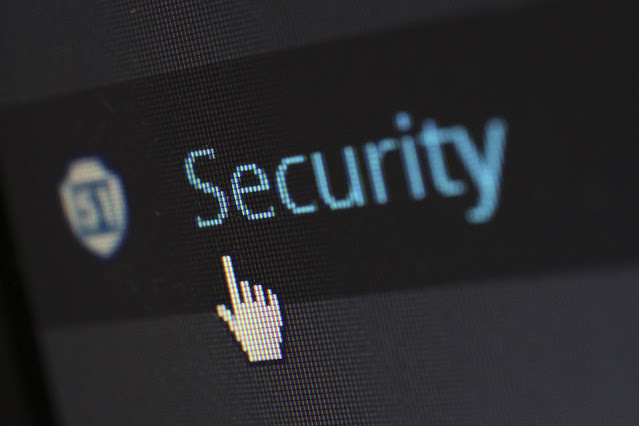 |
| Make sure your business has the right Cybersecurity |
Comprehensive Cybersecurity Measures: Insights from IT Consulting Firm Experts
Cybersecurity is the protection imparted to information and systems vital to your business functioning. Many businesses rely on cybersecurity services or cybersecurity consulting to equip them with strategies that offer protection from digital attacks either by internal or external agencies.
A cybersecurity attack predominantly targets a business’ customer data.
This information can include:
- names,
- contacts,
- credit card details,
- or other identifying information such as Social Security Numbers.
The need for a comprehensive cybersecurity strategy emerges from the impact of cybersecurity attacks on businesses. Businesses suffer huge financial losses due to cyberattacks. In some cases, businesses may succumb to the intense damage by an attack and fail to recover.
Businesses that understand the significance of a well-developed cybersecurity strategy can minimize the extent of an attack and its impact.
Why Cybersecurity is Crucial for Businesses?
The recent World Economic Forum report focuses on the rising number of cyberattacks, including ransomware, phishing, and DDoS (distributed denial-of-service). It reveals that 48% of critical manufacturing firms are strongly vulnerable to cyberattacks.
The report also adds that the risk of cyberattacks is not limited to large corporations or governmental agencies. Any business, from small to large enterprises and giant industries, that manages customer data, faces a significant risk of a cyberattack.
These risks make cybersecurity imperative for businesses. But often the complexity of cybersecurity, arising from the technology involved, can make the landscape overwhelming for businesses. A dearth of internal cybersecurity expertise adds to the woes. In such cases, the services of a cybersecurity service provider deliver enormous value-addition to a business.
Despite these potential challenges, there is a deep need to implement comprehensive cybersecurity measures for the following critical reasons:
Instability Arising from Geopolitical Issues
86% of businesses and 93% of cyber experts say that a huge cyber threat could emerge 2 years from now due to rising geopolitical instability. Cyber threats arising from geopolitical tensions could unfold in hitherto unseen formats as different types of malware are available now. In addition, malware applications are easily accessible globally.
The targets for these cyber attacks could become unpredictable. Critical processes and assets that cybercriminals target may change.
New Technologies and Associated Cyber Risks
Businesses are positive about new emerging technologies. These include AI and ML (artificial intelligence and machine learning), cloud solutions, and rapid developments in user identity and access management. But businesses and cyber experts are almost equally aligned in the thinking that these transforming technologies could make cyber risks more complex.
Cyber risks associated with emerging technologies are greater as the threat landscape is relatively new to businesses. Businesses have a huge canvas to understand and protect using their existing cybersecurity measures.
Attackers, on the contrary, have become more sophisticated in the type of attacks they employ. Their goal is to only discover a single vulnerability they can exploit, which is relatively easier than discovering new protection strategies for unknown threats.
In addition, security experts believe that cybercriminals have increased the variations in their attacks. The impact of such attacks has grown systemic (impacting diverse business segments) in nature rather than being limited to isolated targets.
The consequences of such sophisticated attacks, when they happen, are huge. Businesses face an immediate need to focus their cybersecurity resources on the threat landscape. Threat assessments can be time-consuming as businesses need to evaluate the significance of the threats to the organization.
They need time to evaluate the different types of impact the threat has on operations and on the organization as a whole.
Such evaluation demands frequent monitoring and heavy allocation of cyber resources, which can be intensive for a business.
Take a look at Debt-Free Living Strategies: Building Financial Freedom That Lasts
 |
| Protect your business by having Cybersecurity |
Cyber Risk across the Supply Chain
Vulnerability to this type of cyber risk occurs when your organization relies on third-party organizations for specific services or sells specific services to third parties. These supply chain partners must be cyber resilient to prevent cyber risks.
Risk in this segment arises when attackers target a:
- common hardware,
- software
- or other technology.
An open-source software, for example, with poor security infrastructure, puts your entire organization at immense risk.
Large companies that employ supply chain partners with poor security infrastructure suffer technical and financial breakdowns following a cyberattack.
It is therefore important to partner with a reliable IT company, especially if you need special assistance with customer data management.
Stricter Enforcement of Regulations
Compliance with cybersecurity regulations is no more seen as a mere demonstration of adherence. They are increasingly being seen as an effective channel to make businesses more cyber-resilient.
The rise in cyberattacks has witnessed an increase in the enforcement of regulations in the form of investigations and hefty fines on erring businesses.
There is also an increase in communications and interactions between businesses and policy-makers, which is improving compliance as well as organizational security.
In fact, 70% of cyber experts and 76% of business leaders opine that tightening regulatory compliance further can improve organizational cyber resilience.
What Businesses Can Do to Accelerate their Cyber Resilience
No business is immune to cyberattacks. This realization is the first step toward understanding the significance of cybersecurity and cyber resilience.
A comprehensive examination of the threats facing your business is crucial. Comprehensive risk assessments of your systems, networks, and applications, through internal or external IT help desk services, are a must.
This is a preventive measure that helps identify potential threats and vulnerabilities. A frequent review of your data storage systems and access policies is key to identifying security gaps.
The following practices are also important to make cybersecurity a culture rather than a demonstration of compliance:
Leadership Must Walk the Talk
Organizational leadership must take the initiative to prioritize cyber resilience. Greater collaboration between leadership and cybersecurity teams is key to making cyber resilience integral to your business.
Meetings on a monthly basis, or even on a lesser frequency, can improve organizational confidence regarding cyber resilience. This is because regular communication keeps senior management on the same page regarding cybersecurity. Such discussions unfold opportunities for leadership to prioritize cybersecurity.
For the best results, a shift in reporting hierarchy is recommended.
For example, the CISO – chief information security officer – can report directly to the CEO instead of the CIO, which is conventionally followed. This shift prevents conflict of interest and occurrences such as compromising cybersecurity to meet the demands of budgeting.
Prioritize Addressal of Cybersecurity Talent Shortage
An increase in cybersecurity awareness has led business leaders to admit to the existence of a talent shortage in cybersecurity.
Businesses, especially those dealing in critical infrastructure, face a dearth of specialist expertise in cybersecurity. This shortage makes them more vulnerable to attacks. Small businesses, in particular, are more vulnerable, as they lack the internal expertise to combat rising digital threats.
External expertise such as IT services for small business organizations can provide a value-added partnership for vulnerable businesses in their fight against cyberattacks.
Realize the Role of Cyber Insurance
Cyber insurance is essential to recover financially in the event of a debilitating cyber event. Cyber insurance is integral to a well-conceived cybersecurity strategy. Contrary to popular opinion, one is not exclusive to the other.
Owning cyber insurance is one of the quickest ways to restore your business performance after an unfortunate attack. It is however important to examine the insurance coverage.
Comprehensive cyber insurance empowers you with financial resources to handle:
- A loss that you may have had to suffer financially due to a cyberattack.
For example, if your business suffered a ransomware attack and money was sent to the attacker for damage prevention, then this amount may be covered by the insurance.
- Financial reimbursement may also cover the cost of hiring cybersecurity experts such as negotiators, IT consulting services, and investigators. These experts work to ensure that your business suffers minimal damage.
- You may also bring on board financial experts to investigate your company’s finances and assess creditworthiness. Insurance may cover these expenses too.
- Loss of customer data or an event of such data becoming public can make you liable for certain damages. Cyber insurance covers such expenses.
- Efforts you invest in, to build your brand image after an attack, such as using the services of a PR firm, may be covered.
- Financial liabilities you may incur in the form of third-party liabilities may be covered. If your business involves third-party data, then risks such as intellectual property damage, privacy breach, and business reputation damage, can occur.
Cyber insurance helps you address your liabilities by covering your legal expenses as well as the amount you owe the third party for its loss.
Make Cyber Security Integral to Your Culture
Making cybersecurity a culture starts with empowered employees. Increase awareness among employees through regular cybersecurity training and workshops. Awareness makes employees more responsible. They are more likely to be willing to employ preventive measures.
Implement strict accountability by making your employees answerable to the leadership team. In grave cases where a potential risk has been identified and thwarted, the erring employee must defend his/ her actions before the CISO, CTO, or the CIO. Stricter measures communicate the significance of cybersecurity and the consequences of ignorance and negligence.
It may take time for employees to grasp the seriousness of the measure, but given the accountability risk, a shift in their mindset is more than likely. They will be more inclined to sway toward upkeeping security.
Conclusion
With cyberattacks becoming more innovative and complex, it becomes imperative for businesses to wake up to the no-more-looming threat.
Awareness regarding cyberattacks and cyber events has increased considerably among businesses. But there is still a huge need for business leaders to convert their understanding into a comprehensive cybersecurity strategy.
Prioritizing time and resources for cybersecurity, increasing communication among leadership teams, being willing to address gaps in security expertise, and making persistent efforts, are key to long-term cybersecurity success.
Author: Susan Lee is a cybersecurity expert with experience in online security research, and security procedure planning and execution. Lee has worked in diverse business settings, which equips her with extensive knowledge of cybersecurity challenges specific to each domain.

